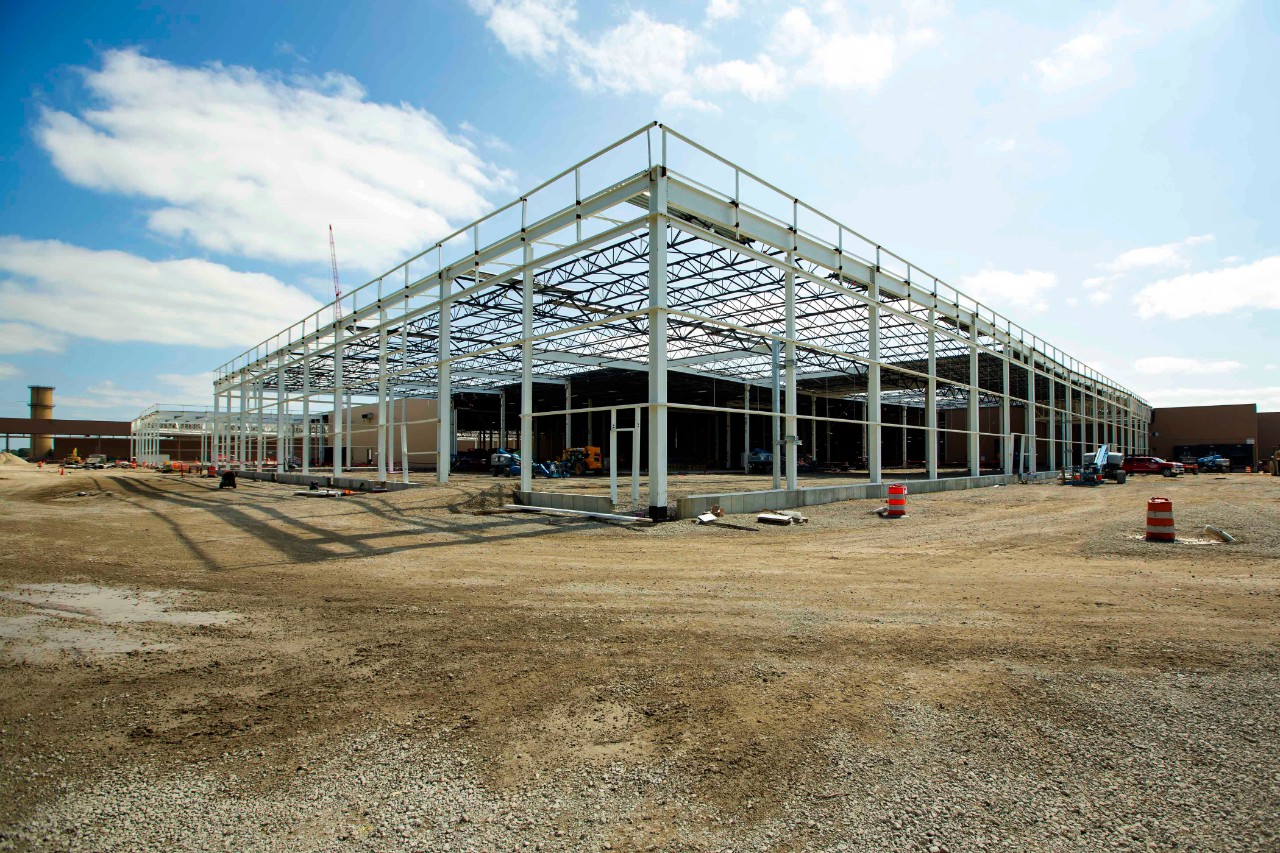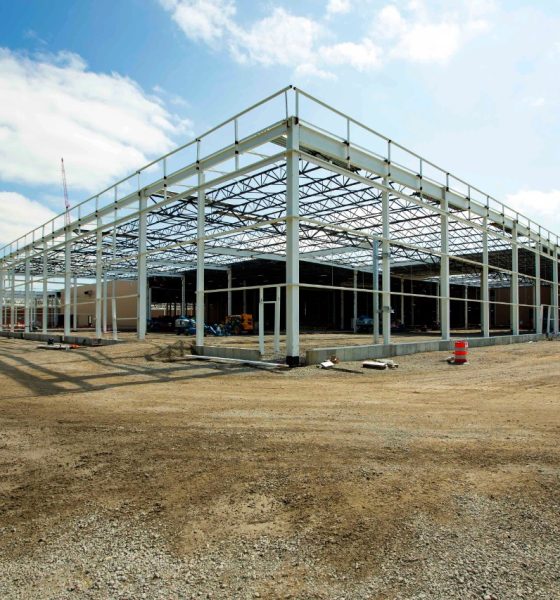

News
How President Biden’s ‘Build Back Better’ plan could bring legacy carmakers into the 21st Century
The introduction of President Joe Biden’s “Build Back Better” plan ignited some electric vehicle enthusiasts with a new sense of relief that their country was considering revamping the EV incentive program in the United States. However, some automakers, specifically Tesla, which is not unionized, will not feel the advantages of favoritism that could result in legacy automakers getting an updated look at some of their production facilities. If the fans and owners of the car companies that will not receive specialized treatment due to unions, at least they can sleep at night knowing the outdated legacy companies will receive a boost, which will only accelerate the United States’ transition to electric vehicles.
President Biden is scheduled to visit GM’s Factory Zero in Detroit today, highlighting the Democrat’s focus on accelerating the mission of electrifying the country’s vehicle fleet. That is, if you are operating with unionized workers. While the lack of acknowledgment of industry leaders like Tesla has fueled some EV enthusiasts to highlight the questionable commitment of the President, Biden is still helping out the legacy automakers and has a reasonable portion of the “Build Back Better” budget set aside to bring lagging car companies up to date with their technologies.
U.S. Senate Panel looks to boost EV Tax Credit to $12,500: What we know so far
Biden, along with Democrats in Congress, has already proposed nearly $50 billion in tax breaks, including a focus on EVs becoming a mainstay of government transportation. Now, Biden’s plan will provide loans for retooling factories to bring facilities up to speed with the manufacturing of electric vehicles and packages that will assist automotive plant communities.
Of the “Build Back Better” plan’s budget, $3.5 billion is set aside for the retooling and revival of U.S. automotive production factories. It would allocate some spending in the plan to see that traditional U.S. automakers cannot say that they do not have the technologies or the ability to produce EVs. The factories would be revolutionized by being converted into high-tech EV manufacturing sites. These manufacturers could also receive up to $3 billion in loans through the Department of Energy Advanced Technology Vehicles Manufacturing Loan Program. Additionally, communities in these areas are set to see the revival of nearly $3.7 billion in incentives, Reuters reports.

Architectural rendering of the completed first phase of GM’s Wallace Battery Cell Innovation Center. The Wallace Center will will accelerate new technologies like lithium-metal, silicon and solid-state batteries along with production methods that can quickly be deployed at battery cell manufacturing plants like GM’s joint ventures with LG Energy Solution in Lordstown, Ohio, and Spring Hill, Tennessee, along with other undisclosed locations.
Gerald Johnson, GM’s Head of Global Manufacturing, told the media outlet that federal spending on this level could increase demand for EVs. The advances in vehicle manufacturing could introduce higher-quality vehicles with more admirable features. The re-introduction of the EV tax credit also contributes significantly to consumer interest in purchasing EVs. Johnson said GM’s North American EV assembly capacity will reach 20% in 2025, and 50% in 2030.
Biden’s plan does not only benefit the lagging automakers by fronting the money for rejuvenation of automotive manufacturing facilities but the consumer as well. Biden’s plan reintroduces the EV tax credit, with up to $12,500 being offered. The credit may put cash directly into consumers’ pockets.
I’d love to hear from you! If you have any comments, concerns, or questions, please email me at joey@teslarati.com. You can also reach me on Twitter @KlenderJoey, or if you have news tips, you can email us at tips@teslarati.com.

Elon Musk
Elon Musk’s X will start using a Tesla-like software update strategy
The initiative seems designed to accelerate updates to the social media platform, while maintaining maximum transparency.

Elon Musk’s social media platform X will adopt a Tesla-esque approach to software updates for its algorithm.
The initiative seems designed to accelerate updates to the social media platform, while maintaining maximum transparency.
X’s updates to its updates
As per Musk in a post on X, the social media company will be making a new algorithm to determine what organic and advertising posts are recommended to users. These updates would then be repeated every four weeks.
“We will make the new 𝕏 algorithm, including all code used to determine what organic and advertising posts are recommended to users, open source in 7 days. This will be repeated every 4 weeks, with comprehensive developer notes, to help you understand what changed,” Musk wrote in his post.
The initiative somewhat mirrors Tesla’s over-the-air update model, where vehicle software is regularly refined and pushed to users with detailed release notes. This should allow users to better understand the details of X’s every update and foster a healthy feedback loop for the social media platform.
xAI and X
X, formerly Twitter, has been acquired by Elon Musk’s artificial intelligence startup, xAI last year. Since then, xAI has seen a rapid rise in valuation. Following the company’s the company’s upsized $20 billion Series E funding round, estimates now suggest that xAI is worth tens about $230 to $235 billion. That’s several times larger than Tesla when Elon Musk received his controversial 2018 CEO Performance Award.
As per xAI, the Series E funding round attracted a diverse group of investors, including Valor Equity Partners, Stepstone Group, Fidelity Management & Research Company, Qatar Investment Authority, MGX, and Baron Capital Group, among others. Strategic partners NVIDIA and Cisco Investments also continued support for building the world’s largest GPU clusters.
News
Tesla FSD Supervised wins MotorTrend’s Best Driver Assistance Award
The decision marks a notable reversal for the publication from prior years, with judges citing major real-world improvements that pushed Tesla’s latest FSD software ahead of every competing ADAS system.

Tesla’s Full Self-Driving (Supervised) system has been named the best driver-assistance technology on the market, earning top honors at the 2026 MotorTrend Best Tech Awards.
The decision marks a notable reversal for the publication from prior years, with judges citing major real-world improvements that pushed Tesla’s latest FSD software ahead of every competing ADAS system. And it wasn’t even close.
MotorTrend reverses course
MotorTrend awarded Tesla FSD (Supervised) its 2026 Best Tech Driver Assistance title after extensive testing of the latest v14 software. The publication acknowledged that it had previously criticized earlier versions of FSD for erratic behavior and near-miss incidents, ultimately favoring rivals such as GM’s Super Cruise in earlier evaluations.
According to MotorTrend, the newest iteration of FSD resolved many of those shortcomings. Testers said v14 showed far smoother behavior in complex urban scenarios, including unprotected left turns, traffic circles, emergency vehicles, and dense city streets. While the system still requires constant driver supervision, judges concluded that no other advanced driver-assistance system currently matches its breadth of capability.
Unlike rival systems that rely on combinations of cameras, radar, lidar, and mapped highways, Tesla’s FSD operates using a camera-only approach and is capable of driving on city streets, rural roads, and freeways. MotorTrend stated that pure utility, the ability to handle nearly all road types, ultimately separated FSD from competitors like Ford BlueCruise, GM Super Cruise, and BMW’s Highway Assistant.
High cost and high capability
MotorTrend also addressed FSD’s pricing, which remains significantly higher than rival systems. Tesla currently charges $8,000 for a one-time purchase or $99 per month for a subscription, compared with far lower upfront and subscription costs from other automakers. The publication noted that the premium is justified given FSD’s unmatched scope and continuous software evolution.
Safety remained a central focus of the evaluation. While testers reported collision-free operation over thousands of miles, they noted ongoing concerns around FSD’s configurable driving modes, including options that allow aggressive driving and speeds beyond posted limits. MotorTrend emphasized that, like all Level 2 systems, FSD still depends on a fully attentive human driver at all times.
Despite those caveats, the publication concluded that Tesla’s rapid software progress fundamentally reshaped the competitive landscape. For drivers seeking the most capable hands-on driver-assistance system available today, MotorTrend concluded Tesla FSD (Supervised) now stands alone at the top.
News
Elon Musk’s Grokipedia surges to 5.6M articles, almost 79% of English Wikipedia
The explosive growth marks a major milestone for the AI-powered online encyclopedia, which was launched by Elon Musk’s xAI just months ago.

Elon Musk’s Grokipedia has grown to an impressive 5,615,201 articles as of today, closing in on 79% of the English Wikipedia’s current total of 7,119,376 articles.
The explosive growth marks a major milestone for the AI-powered online encyclopedia, which was launched by Elon Musk’s xAI just months ago. Needless to say, it would only be a matter of time before Grokipedia exceeds English Wikipedia in sheer volume.
Grokipedia’s rapid growth
xAI’s vision for Grokipedia emphasizes neutrality, while Grok’s reasoning capabilities allow for fast drafting and fact-checking. When Elon Musk announced the initiative in late September 2025, he noted that Grokipedia would be an improvement to Wikipedia because it would be designed to avoid bias.
At the time, Musk noted that Grokipedia “is a necessary step towards the xAI goal of understanding the Universe.”
Grokipedia was launched in late October, and while xAI was careful to list it only as Version 0.1 at the time, the online encyclopedia immediately earned praise. Wikipedia co-founder Larry Sanger highlighted the project’s innovative approach, noting how it leverages AI to fill knowledge gaps and enable rapid updates. Netizens also observed how Grokipedia tends to present articles in a more objective manner compared to Wikipedia, which is edited by humans.
Elon Musk’s ambitious plans
With 5,615,201 total articles, Grokipedia has now grown to almost 79% of English Wikipedia’s article base. This is incredibly quick, though Grokipedia remains text-only for now. xAI, for its part, has now updated the online encyclopedia’s iteration to v0.2.
Elon Musk has shared bold ideas for Grokipedia, including sending a record of the entire knowledge base to space as part of xAI’s mission to preserve and expand human understanding. At some point, Musk stated that Grokipedia will be renamed to Encyclopedia Galactica, and it will be sent to the cosmos.
“When Grokipedia is good enough (long way to go), we will change the name to Encyclopedia Galactica. It will be an open source distillation of all knowledge, including audio, images and video. Join xAI to help build the sci-fi version of the Library of Alexandria!” Musk wrote, adding in a later post that “Copies will be etched in stone and sent to the Moon, Mars and beyond. This time, it will not be lost.”








